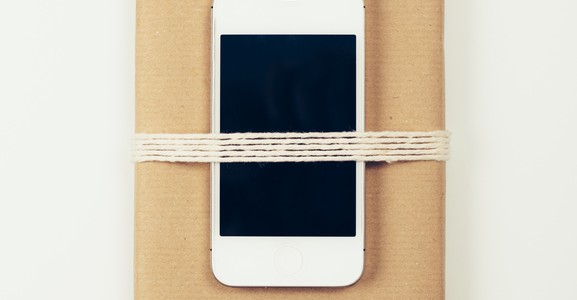What is Mobile-Engaged Packaging and Can Small Businesses Benefit?

Two thirds of Brits now own a smartphone, and these devices have become more popular than laptops as a means of getting online. The proportion of smartphone owners is highest amongst 16 – 24 year olds, at 90%, but older generations are also getting on board with this technology at an unprecedented rate.
As a result, businesses that are in the know are keen to engage with their consumers via this medium. Brands like Cadbury’s, Toni and Guy, and Coca Cola often have QR codes on their product packaging, and others run competitions that require their customers to download the product’s app in order to take part.
This kind of mobile-engaged packaging has been around for several years, yet it is only recently that it has started to take off as an effective means of customer communication. So, how can brands start to get the most out of this technology?
The problems with traditional mobile-engaged packaging
Pepsi Max, for example, are currently running a promotion that offers tickets to UEFA Champions League football games as a prize for users who download their app and scan a special code on each bottle. And while obsessive football fans will likely download the app temporarily to their devices, those outside of that demographic could be reluctant to add yet another app to their phone that they may never look at again.
Similarly, QR codes, while a smart means of directing a mobile user to a website or promotion, are seen as a little outdated, and they require the user to have software on their phones that will interpret the code. Many people in the West tend to ignore them and they have seen much more success in Asian countries.
Another traditional way to engage mobile users has been to have codes that they could text to a number to see if they had won a prize. These can be effective, but are a little unwieldy and a lot of people simply do not bother to get involved with them.
Innovative mobile-engaged packaging approaches
Brands are always keen to find innovative ways to relate to their customers on their mobile devices and to benefit from the engagement this generates. As the WiFi and 4G infrastructure is generally improving too, mobile users are more open to using their devices in public and two-way communication can take place more easily. Devices are also becoming increasingly more powerful and have the ability to incorporate more robust technology to enable consumer interaction.
A relatively new phenomenon in mobile-engaged packaging is the introduction of new technology such as near-field communication (NFC) and Bluetooth low-energy (BLE). With these innovations, small chips within packaging can interact with mobile phones without the need for specialist software or multiple stages of action. Near-field communication is available on some Android phones and although Apple initially resisted this technology, they eventually incorporated it into iPhone 6 handsets. It is expected that 1/3 of mobile phones will have NFC technology next year, totalling 1.2 billion NFC-enabled handsets worldwide in 2018.
With a swipe of the chip by a phone, NFC and BLE devices can display information or direct users to web pages, videos or social media accounts. Imagine if scanning your flat-pack furniture box sent you to a website showing you how to build it, or scanning your packet of cauliflower gave you a brand new recipe to use it in. Brands are starting to consider the very real possibilities associated with this kind of technology and are asking themselves how they can incorporate it into their own marketing plan or customer support service.
Remy Martin, the French firm that produces Cognac, incorporates an NFC chip in the bottle’s lid. The chip is activated when the bottle is opened, giving consumers the reassurance that they have received a genuine bottle of Remy Martin cognac, and that it has not been previously opened and resealed.
Grolsch, the beer company, have also experimented with NFC-enabled packaging, offering their customers a free movie with their beer when they tap the bottle’s chip with their phone.
These advances in technology can really help brands to stand out from the crowd. While perhaps currently considered a novelty, this kind of innovation could encourage brand loyalty and increase how much a business is talked about — especially on social media.
So, will it work?
While mobile-engaged technology can be used with most types of packaging, there is certainly an appeal within handheld packaging, which corresponds well to handheld devices. However, at present, NFC and BLE chips are relatively unlikely to be used in everyday products. Their cost can be prohibitively expensive for businesses to consider putting them in every single chocolate bar’s packaging or in with every bottle of shampoo, for instance. However, as premium brands carry out tests and use them imaginatively, the prices will ultimately come down and a wider range of brands will be able to make use of their possibilities.
But will customers want to interact with brands via their phones? The more compelling an offer the brand can make and the higher the brand authority, the more likely consumers are to engage with mobile-engaged packaging. Using this technology for the sake of it may see paltry results but with some creative thinking, companies will be able to come up with approaches that are persuasive and tempting to their buyers.
For more information on the latest updates within the packaging world, head on over to our Packaging Clinic.
Sarah Hickson
Latest posts by Sarah Hickson (see all)
- What is Sugarcane Fiber and Why is it the Most Sustainable Material on the Market? - 1st September 2022
- Packaging that is More than Just a Cardboard Box – Easy Branding Boxes - 27th July 2022
- How to Protect Temperature-Sensitive Goods During Transit - 14th July 2022
